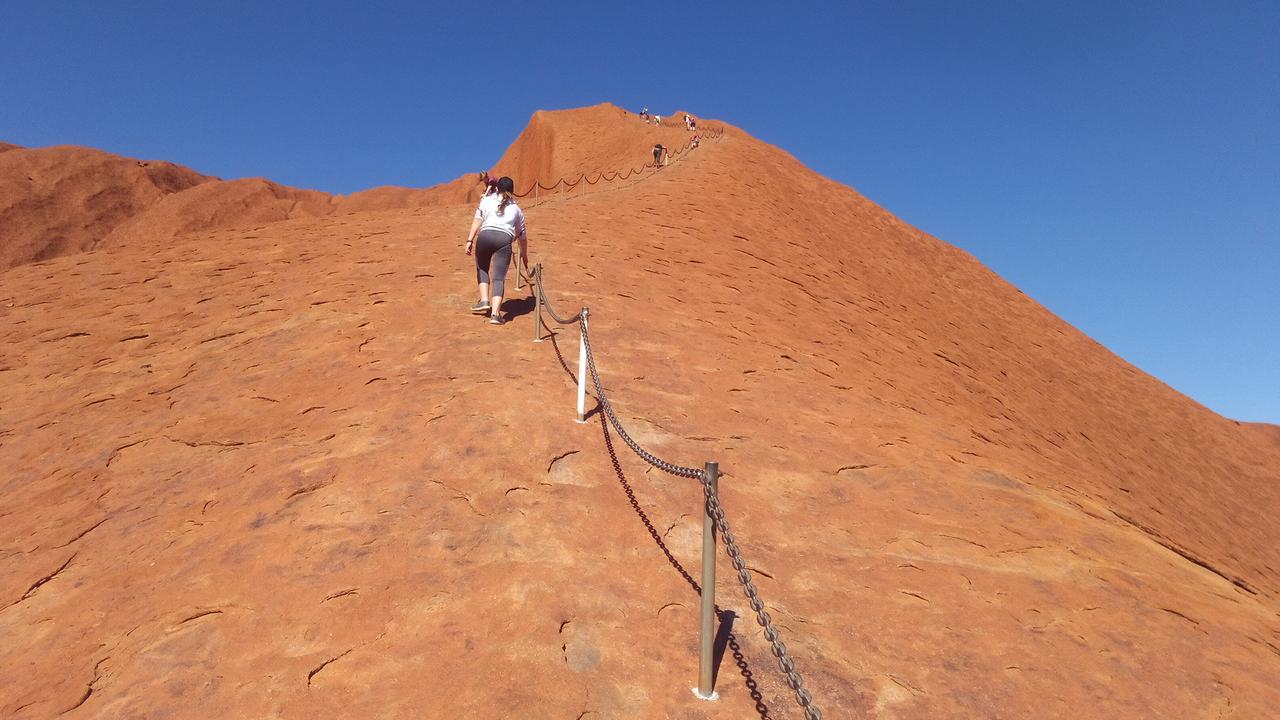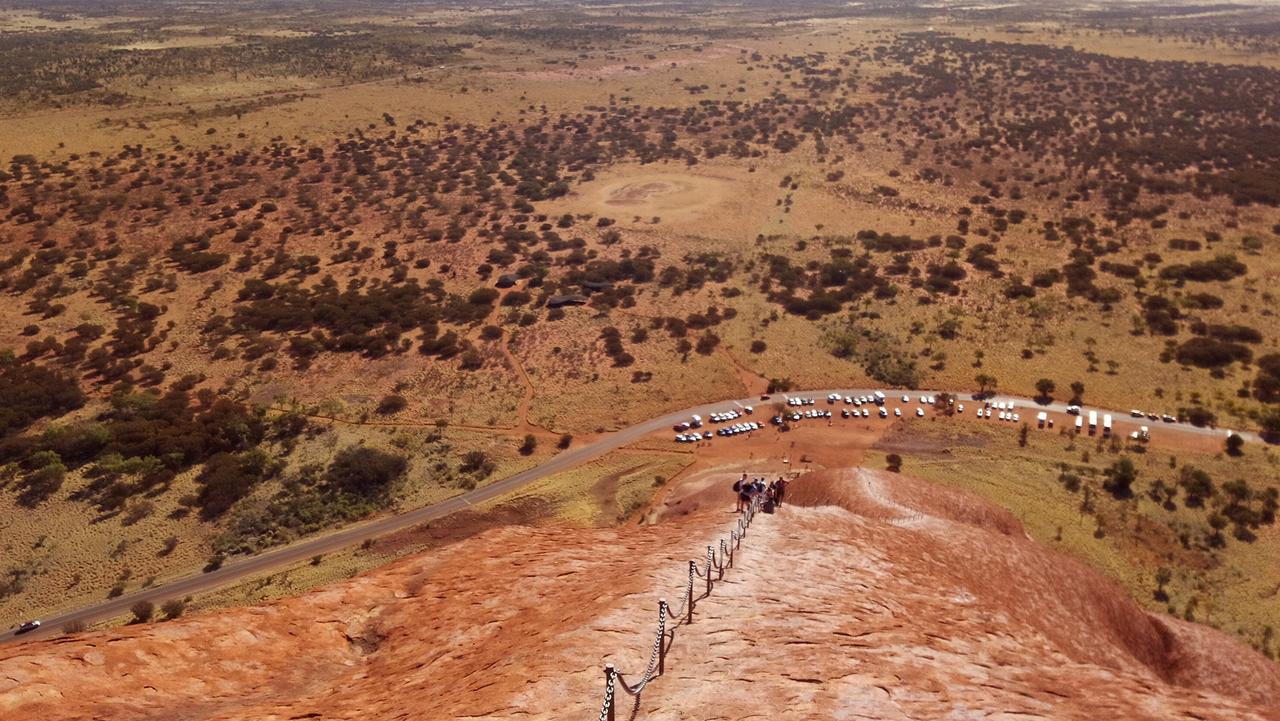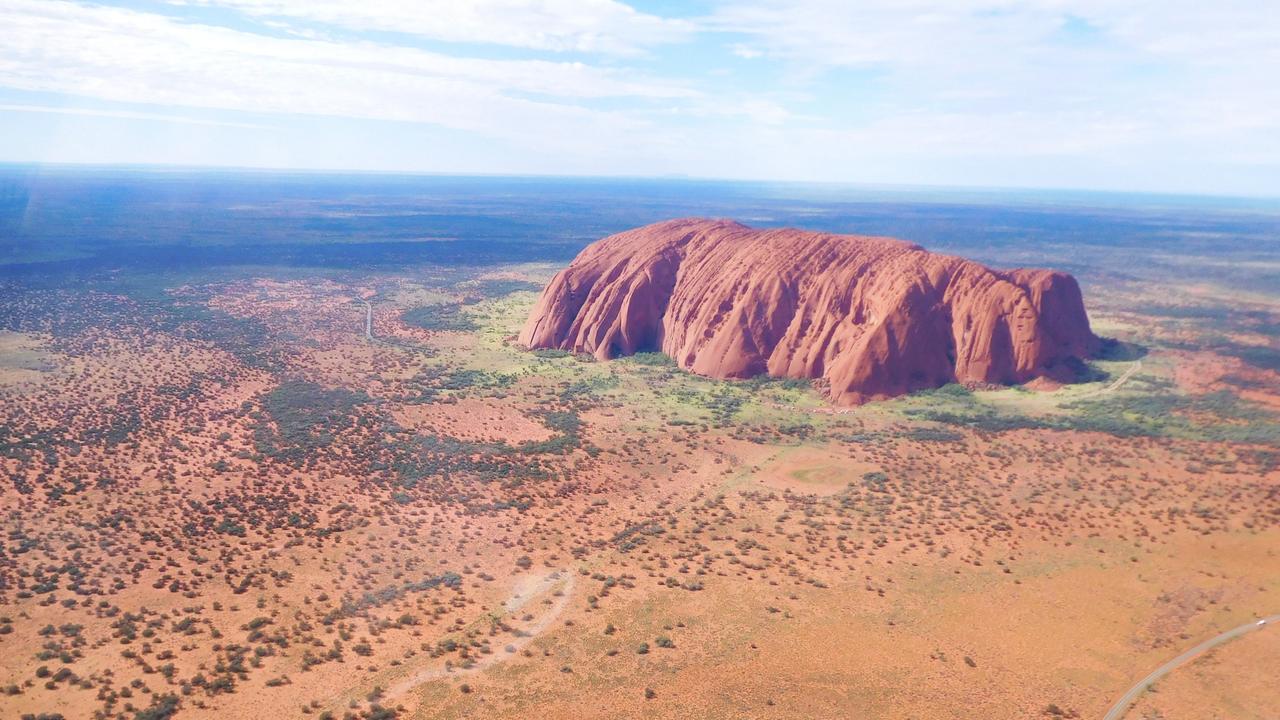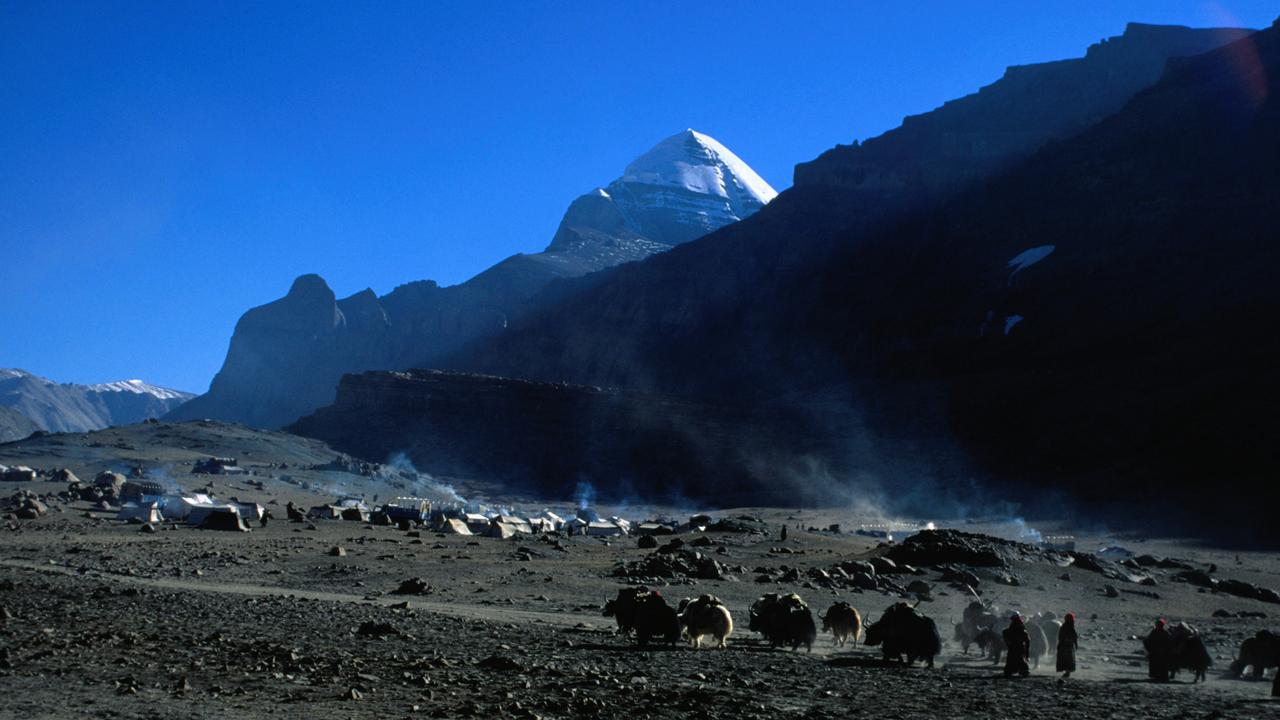Why we shouldn’t be climbing Uluru
Many tourists see it as a personal challenge to climb to the top of one of Australia’s most famous landmarks but this is why it’s so controversial.
As soon as I arrive at Ayers Rock Airport I think to myself “why didn’t I do this sooner?”.
It’s probably a common feeling among Australians who have made the trek to the “Red Centre” after years of overseas holidays exploring places like Europe, Asia and America.
I’m not a complete city slicker as I’ve lived surrounded by the red dirt of a western NSW mining town but it was nothing like this.
This place feels untouched and it’s vibrant. It may seem strange to describe something as vibrant when the idea most people have of the desert is that it’s barren, dull and quite boring but weirdly that’s how the muted orange soil and pale green trees appear next to the bright blue sky.
None of the photos of this place do it justice.
The landscape feels strangely exotic as it’s so different to the rest of Australia that we could be in a foreign country.
While the expansive scenery looks exactly like the picture-perfect postcards you see — the ones that don’t look real — even the postcards don’t capture a particular glint of the sun that brings the landscape to life and changes it as the day goes on.
The light can make the yellow spinifex grass look iridescent at times and the silence of the place adds a majestic and mysterious quality to the environment.
It’s a masterpiece of drama and beauty that could compete with any Tuscan landscape.

The stunning landmark of this mostly flat environment is the majestic red rock, Uluru, which provides a hypnotic centrepiece. It towers over the rest of the landscape with a quiet dignity and you can understand why the Aboriginal people treat Uluru as a place of spiritual significance.
My reason for finally heading to the Northern Territory was to visit a friend, but others are drawn here as tourists, from other countries or are Australians exploring their own patch — and perhaps to climb.
Whether to climb Uluru has been controversial in recent years and it’s something that the Aboriginal people have been against for many reasons, including that it’s against their cultural practices but also because it’s a steep climb and it’s dangerous.
When you stand at the bottom of the rock and look up at towering smooth surface that you’re expected to navigate, it’s not hard to see why 37 people have died attempting the climb.
The top of Uluru used to be a place where certain Aboriginal men could go; now you can see a pale track worn into the rock where the footsteps of thousands of people have eroded its rusty red surface.
These people have chosen to disregard a request from the Anangu people not to climb.
A sign at the bottom states: “Please don’t climb”.
“Under our traditional law climbing is not permitted … As custodians we are responsible for your safety and behaviour … Too many people have died or been hurt causing great sadness.”

According to Marcia Langton’s book Welcome to Country: A Travel Guide to Indigenous Australia, the Aboriginal people believed that the spiritual beings who played a part in the creation of the world during The Dreamtime could sometimes be dangerous.
This is why Indigenous owners perform smoking or water blessing rituals, it’s to give guests safe passage. It’s upsetting for Aboriginal people when someone gets injured or becomes sick visiting their land because they feel responsible for them. They feel like they haven’t done their job to reassure the spirits of the land about their visitors.
RELATED: Interesting myths and other facts you didn’t know about Australia

AN INCREASE IN CLIMBERS
The Anangu have wanted to close the climb for a long time and the Uluru-Kata Tjuta National Park Management Plan 2010-2020 agreed to a process that would see the climb closed only once certain conditions were met, including that less than 20 per cent of visitors did the climb and once cultural and natural experiences became the main reason why people visited the park.
Last year it was announced the trail would be closed from October 26, 2019 after the number of tourists who attempted the walk dropped below 20 per cent, from about 70 per cent in previous decades.
However, the news has sparked an influx of climbers.
Before the announcement was made about 50 to 140 people were climbing the rock every day, making up about 16 per cent of overall visitors. According to the website Welcome to Country, about 300 to 500 people are now choosing to climb.
In the past many of the climbers were overseas visitors drawn to Uluru by slick marketing that spruiked the experience of standing on top of the rock. Now most know it’s not encouraged.
It’s interesting to hear from a tour guide at Uluru, who wished to remain anonymous, that most of those who have flocked to the rock since the closure was announced appear to be Australians.

“Many people from overseas that come are already under the impression that it is closed,” one guide told me. “They often question why it is still open.”
The guide, who is not Aboriginal, said there was a disregard for the wishes of the Aboriginal people among those who climbed.
“The challenge of the climb and the satisfaction of being on top are seen as of higher value than listening to and respecting the Aboriginal people,” the guide said.
“Few unfortunately come for what really makes the beauty and uniqueness of Uluru. That is, its meaning to the Aboriginal people of the area, the Anangu.”
To the Anangu, climbing to the top of the rock is not the proper way to experience Uluru.
“Uluru is not a rock to conquer,” the guide said. “They wish people would come to connect to the rock, listen to Country and learn.”
But to some the thrill of making it to the top of Uluru, of completing a personal challenge, seems to be more important than connecting to the spiritual significance of Uluru.
“I believe people should climb,” Peter Severin, the man who installed chains along the path in 1963, told The Saturday Paper. “It’s an exhilarating experience. Ayers Rock belongs to all Australians,” he says. “I don’t know why one would want to cut the chains after 50-plus years of it having been erected — and enjoyed by — tourists.”
However, as the Uluru guide points out, the attitude flies in the face of the respect shown in other parts of the world for sacred natural features.
In the Himalayas for example, climbers are banned from some summits for religious reasons. This includes Mt Kailash where a climb is seen as a dire sin and Mt Kanchenjunga whose summit is seen as the abode of the gods.

Climbing the Devils Tower in the US state of Wyoming is also controversial for the Native Americans.
Then there is Mt Taranaki in New Zealand, which was recently given the same legal rights as a person and is seen as an ancestor for the Maori.
It’s also true that the areas around Uluru are extensive. It may surprise some people to know that it takes about three and a half hours to walk around the base of the rock.
Women had sacred places around Uluru; there are rock paintings in caves and watering holes. Some of them are so private and empty you can almost feel like you’ve travelled thousands of years back in time — even though there are hundreds of tourists around.
You can feel the history in these spaces.
“If non-Indigenous Australians were to embrace the sacredness of this icon and develop an understanding of this special place this could be a moment in Australia’s history that marks a turning point,” the tour guide said.
“While it is great to leave the rock after a day or two with many beautiful photos … what makes it worth the trip is understanding the sacredness of the rock and its meaning to the traditional owners — a culture that has been recognised as the oldest still living culture in the world.
“Uluru is often called the spiritual heart of Australia and it is here that true reconciliation and healing could begin. And it begins with choosing not to climb.”
Continue the conversation @charischang2 | charis.chang@news.com.au




